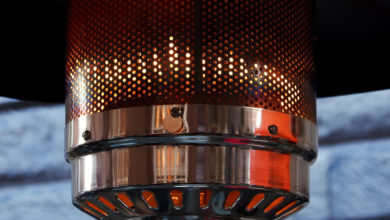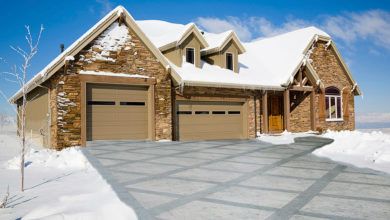Having a wood burning stove for a garage is a great boon in the winter as it allows you to keep using your garage for more than just parking your car – you’ll still be able to use it as a weekend workshop, you’ll still be able to let the kids play there, and so on.
How to install a wood stove in a garage, however? If you already have a chimney in your garage, the task will be much easier but most garages don’t have that. So, let’s go over the whole process of installing wood stove in the garage step-by-step.
- Place the garage wood stove where you’d want it to be. Consult with the manufacturer’s requirements for combustible wall clearance and other special requirements.
- Mark the spot on the ceiling above the stove for where the chimney should be. Be precise – use a plumb bob right over the chimney connection flange of the stove.
- After you’ve copied the exact size of the chimney connection flange on your ceiling above it with a scribbling compass, add 4 inches to the diameter of the hole to allow for the standard minimum clearance for any combustible material.
- Use a jab saw or a utility knife to cut through the ceiling sheetrock. After that, accommodate and install the chimney’s metal collar. Clear the roofing around the opening.
- Cover the floor and walls directly below and behind the wood burning stove with full sheets of fire-rated sheetrock as well as cement backer boards on top of it.
- Connect the different chimney sections and pass them through the roof opening and collar. Attach the chimney to the stove’s chimney flange according to the manufacturer’s instructions.
- Attach the “storm collar” over the roof’s collar. Use silicone caulking around the perimeter gap that’s formed between the storm collar and the chimney’s surface.
- Install the chimney cap. Make sure it snaps perfectly and is locked on the chimney.
- Open the chimney flue.
- Test the stove and the chimney by lighting a newspaper in the stove’s firebox. Adjust the flue to ensure an even flow through the chimney.





